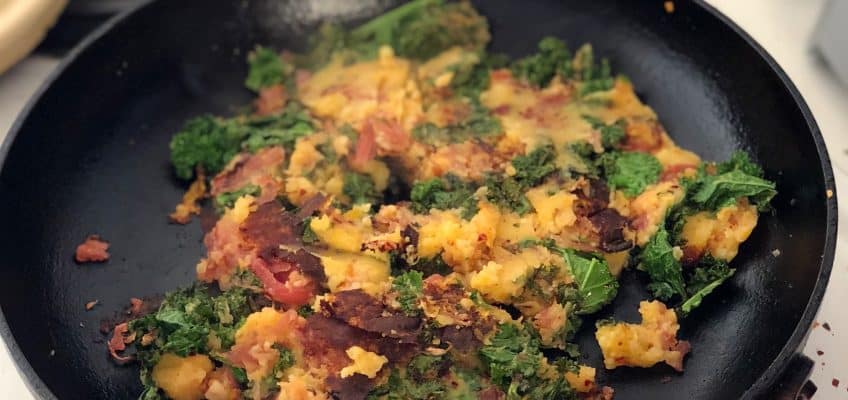Hash browns are one of the main reasons to go out for breakfast, in my opinion.
Along with their crispy, crunchy, starchy friends: rosti, hash, bubble and squeak, potato fritters etc, there’s something magical about fried spuds in all their forms.
It seems like as long as people have been eating potatoes, they’ve been using the leftovers to make fried and crunchy things. According to the website of the Idaho Potato Commission, the first recipe for Rosti – probably the predecessor of the hash brown – was found in Switzerland in 1598.
The term “hashed brown potatoes” was cited in a cookbook in 1888. The original hash browns may have been slightly different from the grated version we’re familiar with; early versions were diced potato, mixed with shortening and chopped onions, and then fried to form a potato cake. Hash browns were a popular breakfast dish in New York in the 1890s, served in fine hotels. And the rest, as they say, is history.
People’s love of hash browns spread around the world. They became a commercial, take-home product around the 1950s; a great way for processors of French fries to use up small offcuts and reject bits of spud.
The best hash browns are deep fried for maximum crunch, I think. Which is why they’re best eaten as a treat, and best eaten out; most Kiwi households not being in the habit of deep frying in the home kitchen.
The related dishes, such as hash and bubble and squeak, are a bit more accessible with just a frypan, and they’re an excellent reason to cook more potatoes than you need with your roast or steak.
I can happily eat a whole meal of hash. I like to add extra veges, especially greens like spinach, silver beet or kale. Brussels sprouts are a nice addition, too. Protein-wise, bacon, smoked fish, sausages, chicken and cooked roast meat are all excellent options. Roasted tomatoes make for a pretty good accompaniment. And eggs, of course, are a natural partner. There’s not much that’s nicer for a late breakfast than a fluffy, crunchy pile of vege-filled hash topped with a perfectly runny poached egg.
Bubble and squeak is an English version of hash, made with cabbage and traditionally with meat left over from a roast dinner. Bubble and squeak gets its quirky name, apparently, from the sound the cabbage makes when it’s cooking in a hot pan.
For something similar in feeling to a hash, but that goes with dinner, I sometimes like to do a kind of crushed, baked potato dish. Small spuds are boiled or steamed in their skins, then popped into a hot baking tray, squashed a little bit with a potato masher, and sprayed with oil. A roast for 15 minutes or so gives lots of crunchy, crispy bits on the outside smooshed bits; they’re like a chip/hash hybrid, and really good with a little meat or fish and a salad.
It’s easy to get distracted with other, newer carbs with their ancient grain reputations and trendy PR. And these certainly can be tasty. But we shouldn’t forget the simple deliciousness that is the fried potato.




